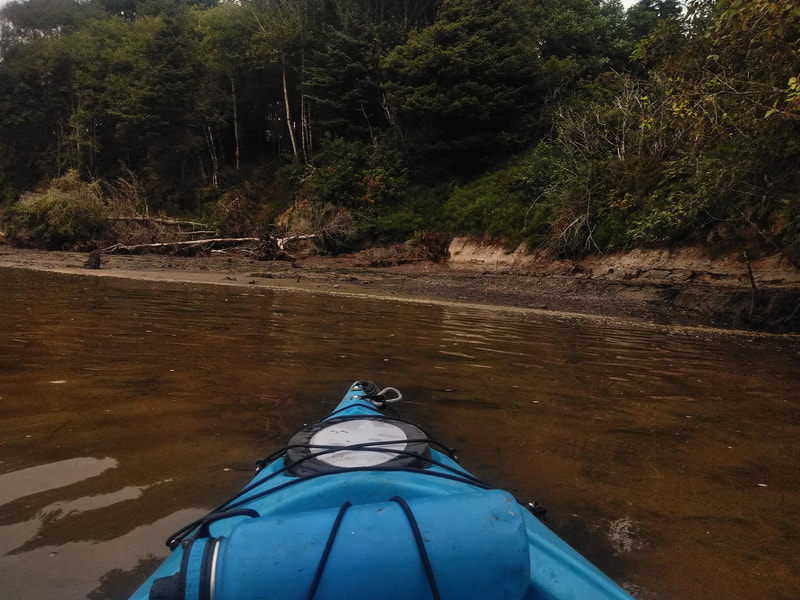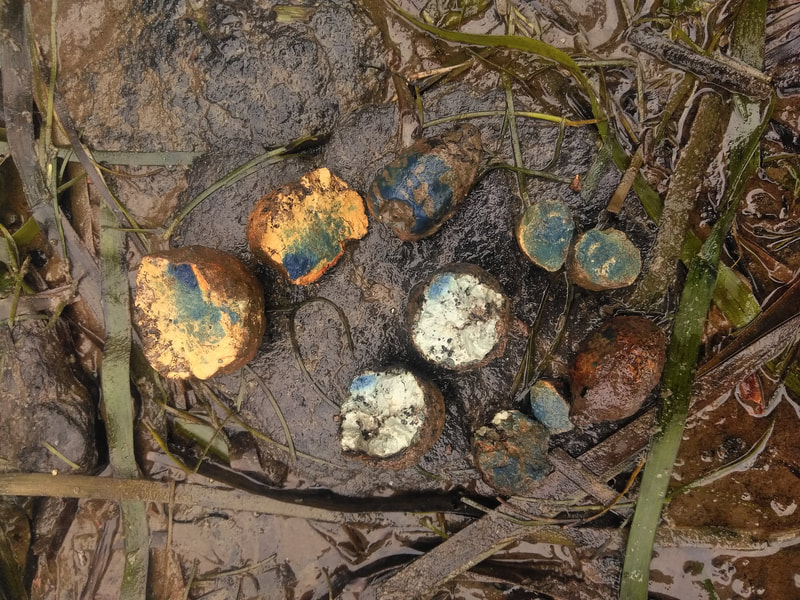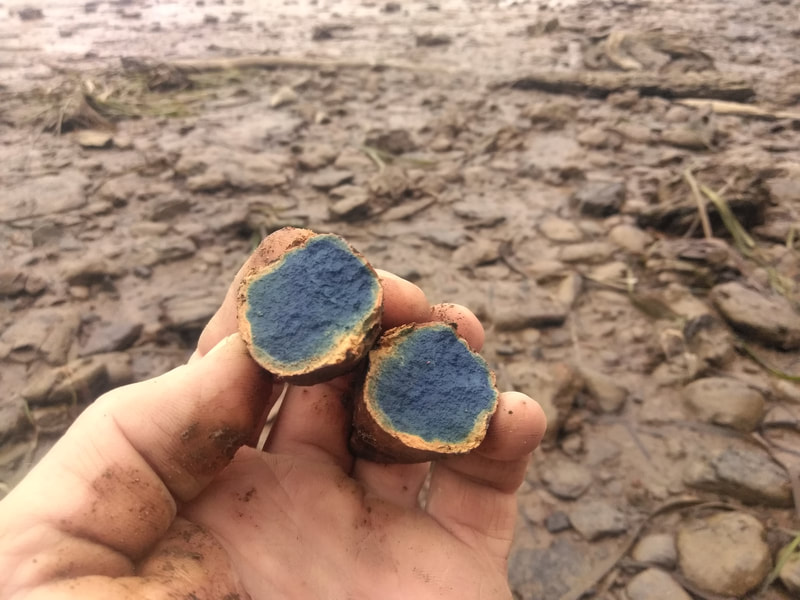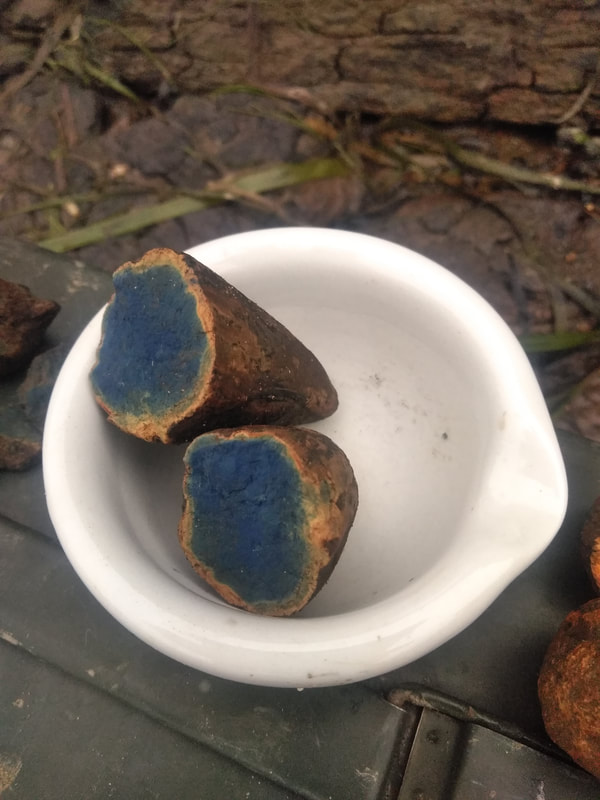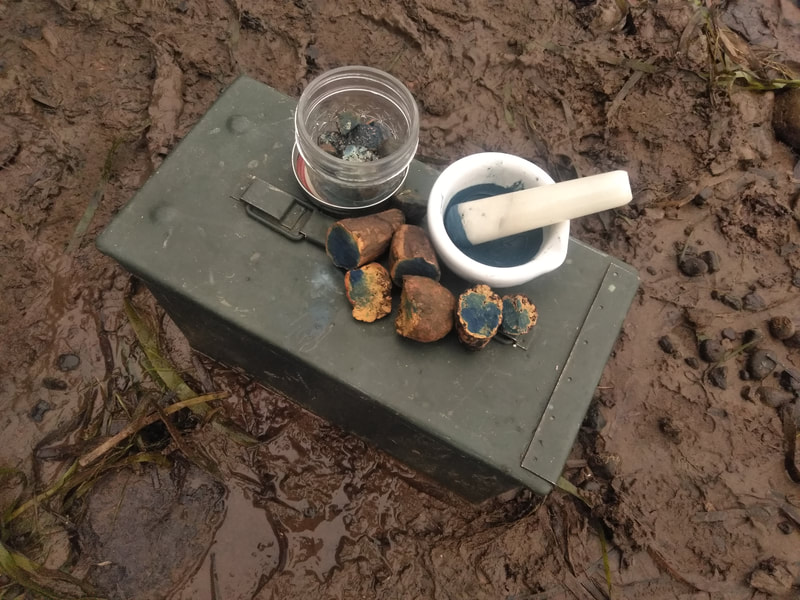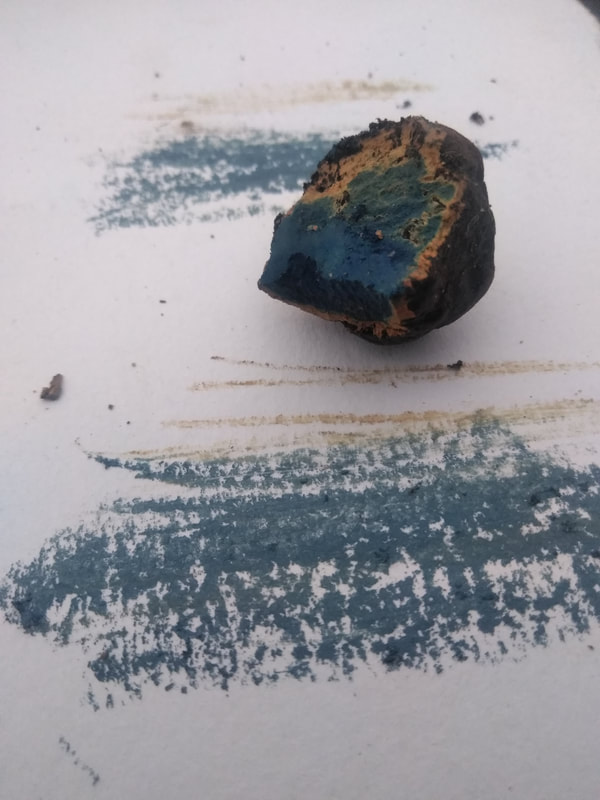PIGMENT HUNTING
THE ART AND SCIENCE OF PIGMENT HUNTING
Pigment Hunter's vision is to create sustainable relationships to the places we live by using local materials such as mineral pigments and plant dyes in developing a sense of place and cultural identity. The projects goal is to emphasize the historical relationship that traditional cultures have with the places of origin and reconnect modern culture with the environments where they live. Pigment Hunter hopes to create a resurgence of cultural life ways that are rooted in place with an emphasis on sustainability while reducing our impact on the natural environment. The loss of cultural connection to the places we live are the result of the global economy and the impacts of material consumption can only be reduced by using local materials when possible.
Pigment hunting is the art of collecting earth minerals and plant materials for making natural paints with local sources of color, but more importantly it reconnects us to the history of the land while creating a sense of place. Pigment hunting requires a variety of skill sets to learn how to discover color that exists beneath ones feet. It also requires the ability to research historical texts and how to read maps that contain helpful information from the underlying geology, circulating hydrology, and the formation of the topography. Ultimately, pigment hunting is about reconnecting to the Earth through the use of natural materials such as minerals, plants, fungi, and lichens as a source of color that can be used with respect to create a culture rooted in the unique materiality of each place.
Pigment hunting is the art of collecting earth minerals and plant materials for making natural paints with local sources of color, but more importantly it reconnects us to the history of the land while creating a sense of place. Pigment hunting requires a variety of skill sets to learn how to discover color that exists beneath ones feet. It also requires the ability to research historical texts and how to read maps that contain helpful information from the underlying geology, circulating hydrology, and the formation of the topography. Ultimately, pigment hunting is about reconnecting to the Earth through the use of natural materials such as minerals, plants, fungi, and lichens as a source of color that can be used with respect to create a culture rooted in the unique materiality of each place.
PIGMENT HUNTING MINERAL PIGMENTS
Minerals come in many forms, textures, and colors that ultimately breakdown creating the soils from which plants can grow. These same minerals can be collected from the Earth in their pure form as well as in the weathered form as clay deposits. Pigment Hunting for minerals can be as simple as keeping an eye out for splashes of color that are visible in the landscape. The art of pigment hunting is more than just collecting color, its about exploring places and taking the time to understand how the formation of the environment in which we exist happened over time. An important part about reading the land is learning how to use maps to understand the underlying geology that gives form to the landscape and its topography which are essential tools for discovering local sources of color from the Earth.
WILD HARVESTING COLOR DYES & PIGMENTS
Wild harvesting color from plants in their natural ecosystems can be done in a way that it does not impact the health of the ecosystem that sustains a diversity of wildlife. Color exists in nature in many forms from various plants parts such as roots, leaves, flowers, berries, and seeds. Harvesting plant materials in nature is a wonderful way to connect to the natural ecosystems and to learn about the unique qualities of each plant through an intimate engagement. There is always an ideal season for harvesting different parts of a plant for its diversity of materials. As foragers of color we should truly understand the limits of each ecosystem and try our best to minimize the impact we have on the regeneration of the plant's life for future generations. In some cases there are opportunities to harvest plants in nature where they have been introduced into environments where they are non native and may have become invasive weeds that need to be controlled. In such cases, these noxious weeds are dominating native ecosystems and can be harvested in a manner to reduce their impact on plants that are endemic to specific places.
CULTIVATING COLOR FOR DYE & PIGMENT
Growing plants to be used for dyes and pigments is one way to minimize the impacts of using synthetic pigments as well as from over harvesting plants within natural ecosystems. Growing plants in an agricultural setting, in a community garden, or at your home can help to reduce the impact of humans on the natural environment. Growing plants close to home or in urban environments also minimizes the amount of fuel and energy that is required to get out in nature to wild harvest plants. These relationships that are developed between humans and plants also creates an intimate bond that needs to be nurtured to create a sense of place and to better understand the interwoven complexities between nature and culture.
EXTRACTING & PROCESSING COLOR
Extracting color from natural materials can be achieved by using some simple tools and non toxic materials that minimize the impacts on your own health as well as the environments and ecosystems that we live within. The colors we use of making paint or for dying fabric should be free of toxins so that you engage with the material directly through a hands on experience. Our skin is our biggest organ and has the ability to absorb toxins so if we can touch, feel, and engage with color with our very own hands then we are taking a step closer to create a truly sustainable form of art and culture.
